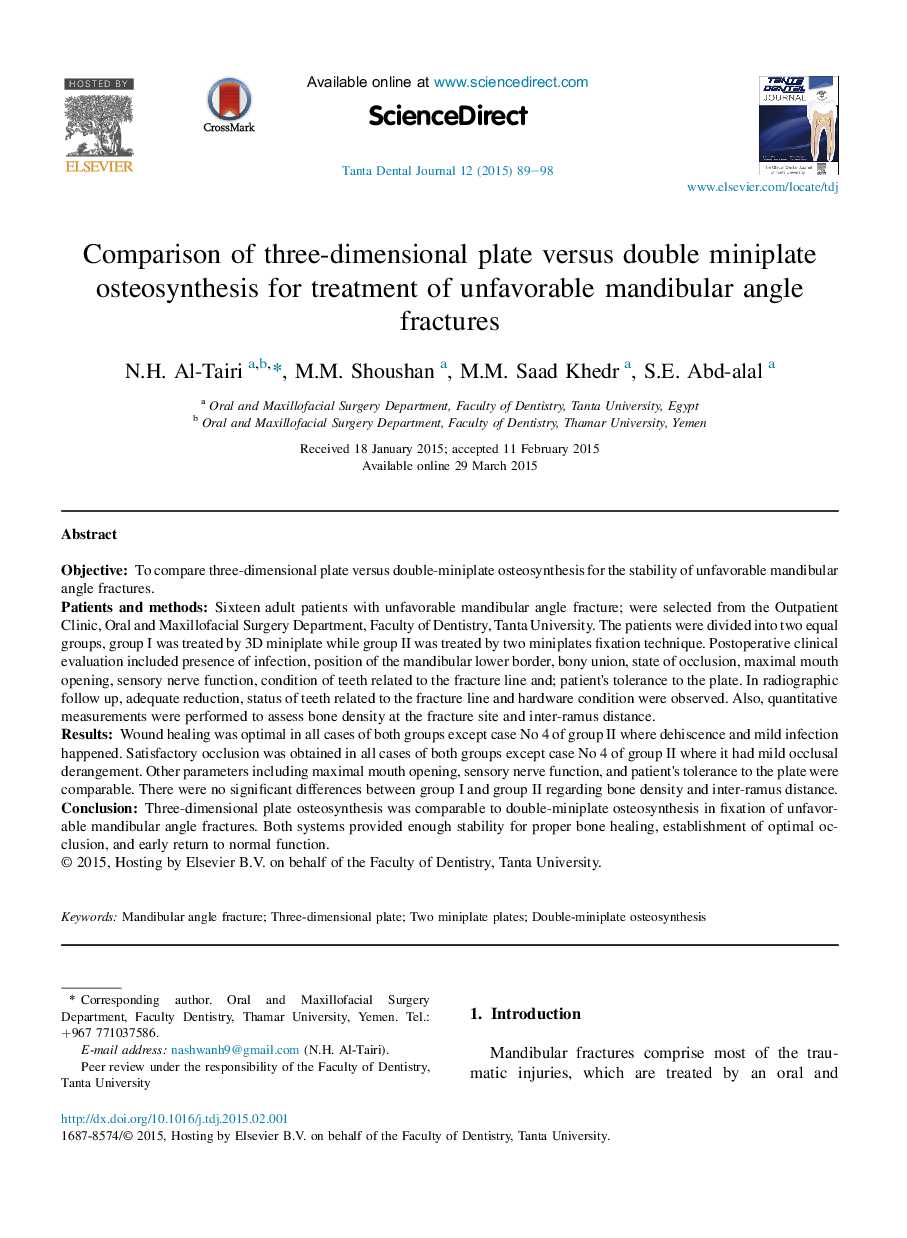| Article ID | Journal | Published Year | Pages | File Type |
|---|---|---|---|---|
| 3179681 | Tanta Dental Journal | 2015 | 10 Pages |
ObjectiveTo compare three-dimensional plate versus double-miniplate osteosynthesis for the stability of unfavorable mandibular angle fractures.Patients and methodsSixteen adult patients with unfavorable mandibular angle fracture; were selected from the Outpatient Clinic, Oral and Maxillofacial Surgery Department, Faculty of Dentistry, Tanta University. The patients were divided into two equal groups, group I was treated by 3D miniplate while group II was treated by two miniplates fixation technique. Postoperative clinical evaluation included presence of infection, position of the mandibular lower border, bony union, state of occlusion, maximal mouth opening, sensory nerve function, condition of teeth related to the fracture line and; patient's tolerance to the plate. In radiographic follow up, adequate reduction, status of teeth related to the fracture line and hardware condition were observed. Also, quantitative measurements were performed to assess bone density at the fracture site and inter-ramus distance.ResultsWound healing was optimal in all cases of both groups except case No 4 of group II where dehiscence and mild infection happened. Satisfactory occlusion was obtained in all cases of both groups except case No 4 of group II where it had mild occlusal derangement. Other parameters including maximal mouth opening, sensory nerve function, and patient's tolerance to the plate were comparable. There were no significant differences between group I and group II regarding bone density and inter-ramus distance.ConclusionThree-dimensional plate osteosynthesis was comparable to double-miniplate osteosynthesis in fixation of unfavorable mandibular angle fractures. Both systems provided enough stability for proper bone healing, establishment of optimal occlusion, and early return to normal function.
